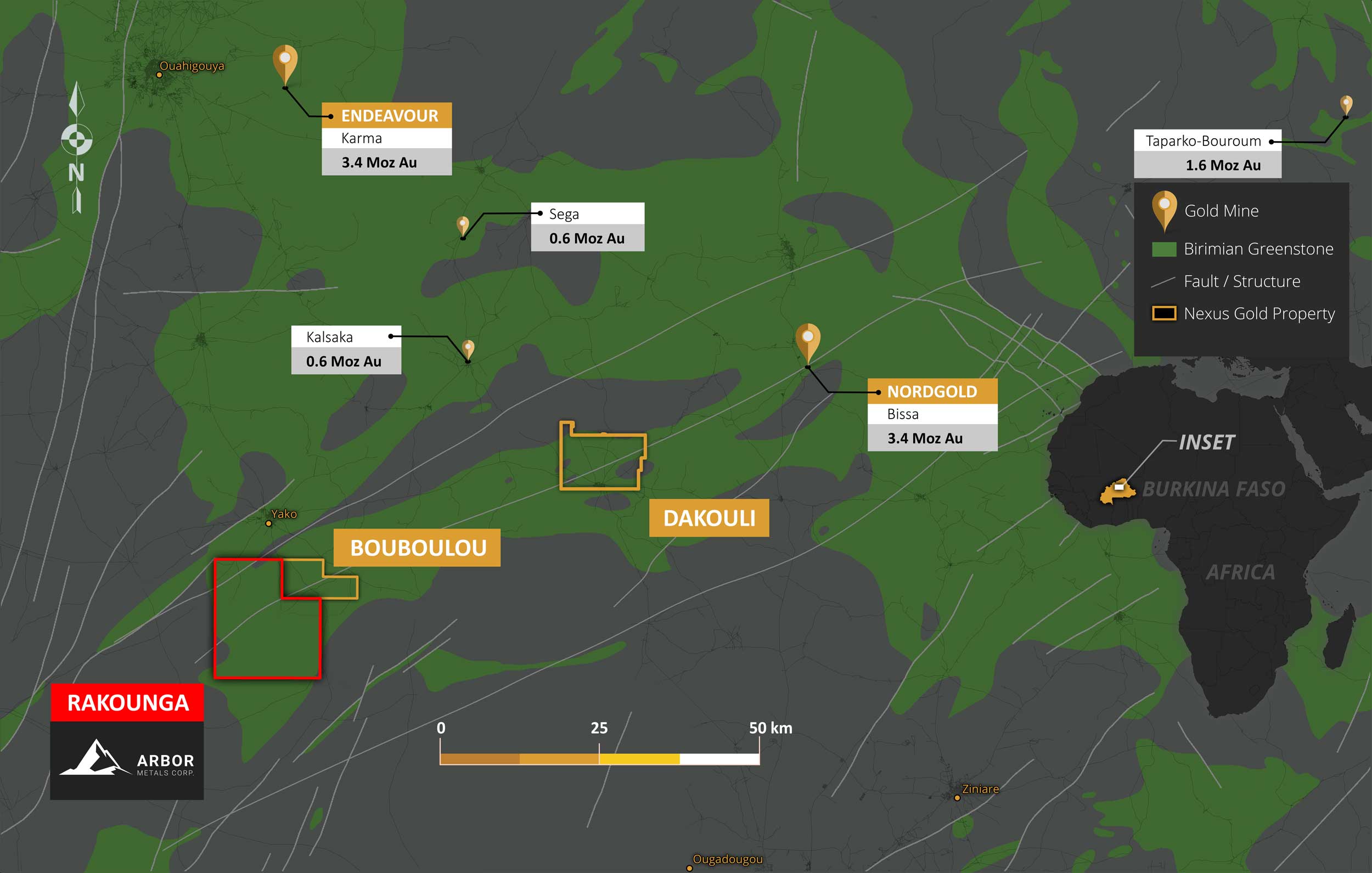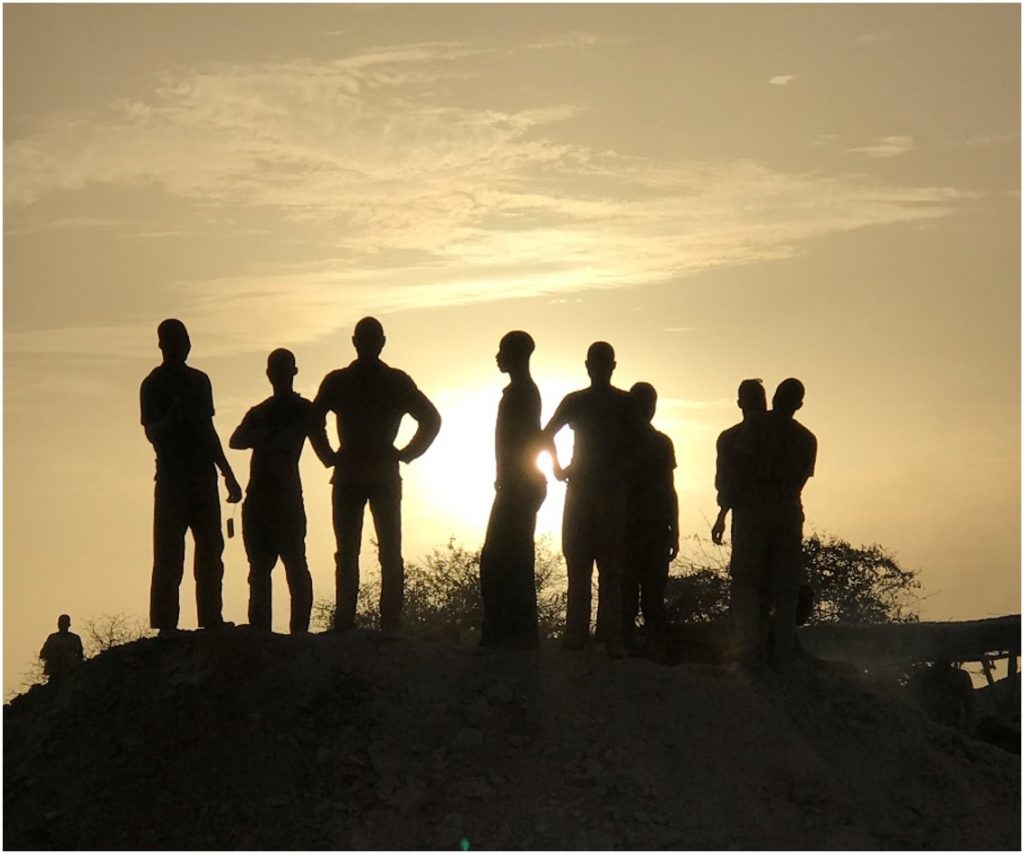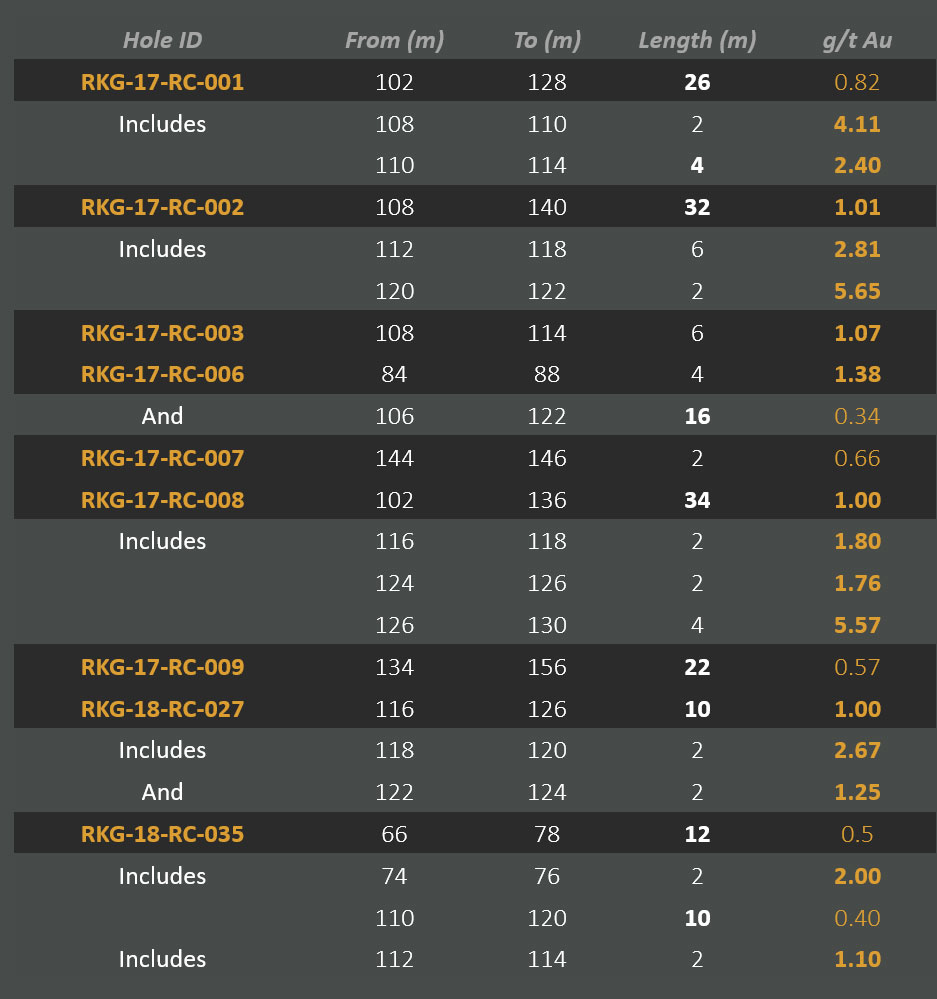- The 250-sq km Rakounga concession, contiguous to Bouboulou concession, contains multiple active orpaillages, namely Koaltenga, Gounga and Porphyry, which confirm widespread gold mineralization is present
- In the summer of 2017, the Company began a sampling program at Rakounga, with select sample highlights including 19.95 g/t Au at Porphyry, 14.90 g/t Au, at Gounga, and 17.30 g/t Au at Koaltenga
- A 3000m RC drill program was conducted in October 2017, with 10 holes at Koaltenga successfully identifying a broad zone of gold mineralization extending over 300 meters along strike and to depths of 80 metres below surface
- Highlights include hole RC-002 which intersected 32m of 1.01 g/t Au, including 2m of 5.65 g/t Au, and 6m of 2.81 g/t Au, and hole RC-008 which returned 34m of 1.00 g/t Au, including 4m of 5.57 g/t Au.
- This structure remains open along strike both to the north east and south west and to depth
RC Results – Koaltenga Zone
- Koaltenga is an expanding and active orpaillage
- The workings feature broad intercepts containing zones running 4 to 6 grams Au suggesting a prominent primary structure which has permeated out into the surrounding schists and volcanic rocks
- Drill results now outline a trend of gold occurrences extending for over 16 kilometres between the company’s Rakounga and Bouboulou concessions
Soil Grid Program
- In July 2018, Nexus geologists conducted a 105-line-kilometer soil sampling survey at the Rakounga concession
- The Survey was designed to investigate the gold-bearing potential on the ground connecting the Koaltenga gold zone, located near the western boundary, and the PR Trend, on the company’s adjacent Bouboulou property
- Results from the survey successfully identified an anomalous gold trend which extends for approximately 7000m (7km) along the southwest-northeast axis and broadens to widths of 2500m
- The newly identified gold trend aligns with the PR trend previously identified at Bouboulou, indicating the mineralized footprint at the combined Bouboulou-Rakounga concessions now exceeds 16km in length
- The survey included line spacing of 400m with samples collected at stations established along the lines at intervals of 50m, with a total of 1,960 samples submitted to Actlabs in Burkina Faso for analysis










